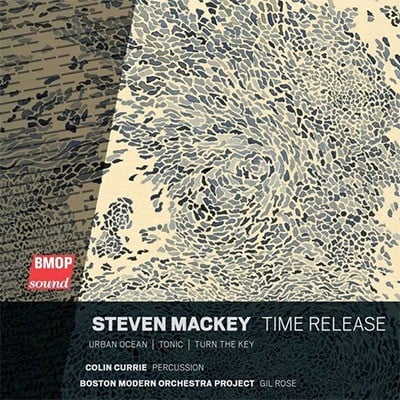3(II=afl, III=picc).3(III=corA).3(II=Ebcl, 3+bcl).2.dbn-4.3.3.1-timp.perc(4):vib/BD/2tam-t/tamb; SD/sus.cym/double bass bow/xyl/lion's roar/2crot/egg shaker/t.bells/tmb/2alm glocken; gong/glsp/2alm glocken/3agogo bells/vibra slap/2crot/finger cyms; mar/ratchet/3tom-t/mark tree/crash cyms-harp-cel-pft-strings
Abbreviations (PDF)
Boosey & Hawkes (Hendon Music)
The honor of composing a piece to mark the opening of a new performing arts center in Miami inspired a list of “to-dos”. I wanted to explore the acoustics of the new hall, pursue my own, current compositional interests, and appropriately celebrate the occasion.
To put the hall through its paces Turn the Key has a variety of densities: small moments for solo harp and solo violin, big arrivals for the whole orchestra, clangorous percussion, silky passages for string orchestra, plucky staccato passages, brassy wind band music, intricate rhythmic interplay, dense counterpoint, and various combinations of the above. Of course, in so doing, I’ve also put the orchestra through its paces and having worked with the New World Symphony many times in the past I have complete confidence in them to bounce all the right vibrations off the walls.
My current interest in terse melodic structures and persistent rhythmic motives helps, I hope, to make sense of this varied topography. The piece grew from a simple rhythm that I found myself employing to knock on doors and absent mindedly tap on all available surfaces – long, long, short, short, in a 7/8 meter. (Incidentally, dash, dash (long, long) is the Morse code for the letter ‘M’ and dot, dot stands for ‘I’ as in “MIaMI”.) This rhythm suggested melodic cells and complimentary counter-rhythms that in turn suggested other melodic cells. These lean and unadorned elements develop and combine to form fanciful sonic images.
It is hard for me to describe the affect of the piece. Technically speaking, the language at the outset is quite dissonant but, in my mind, the tone is playful like some weird dance by a crippled but soulful creature. This dance, in spite of its struggles embodies a bittersweet joy, like watching my 12 year old, diabetic, arthritic, black lab, greet his evening meal.
More and more I find that I want my music to contain catharsis and transformation and for this occasion I wanted to fully embrace a sense of triumph and accomplishment. The stinginess of the musical material at the beginning, by the end, unlocks a generous, joyous spirit and culminates in an unabashed celebration.
The title, Turn the Key has several resonances. It obviously refers to opening a door to a new concert hall. Also, the secondary definition of the word key, “crucial for understanding,” can be translated by the Spanish word 'clave' which also refers to the basic rhythm of dances of Afro-Cuban origin, (i.e. the ‘key’ rhythm). This seems appropriate since Turn the Key does spring from a fundamental rhythm and develops by turning this rhythm around to mean different things. To my knowledge, this rhythm is not an actual clave for an existing dance, the 7/8 gives it a marked limp, but if you divide music into its most primal motivations – singing, dancing, and praying – Turn the Key is a dance.

Boston Modern Orchestra project / Gil Rose
BMOP/sound 1068

